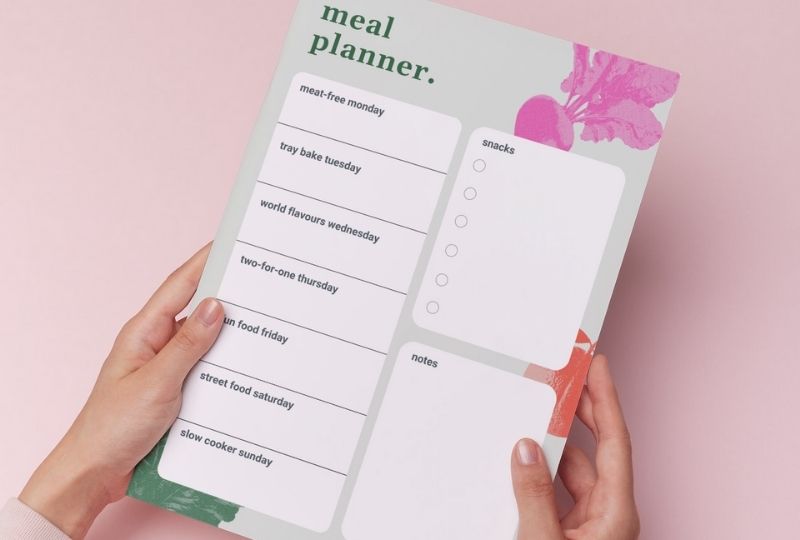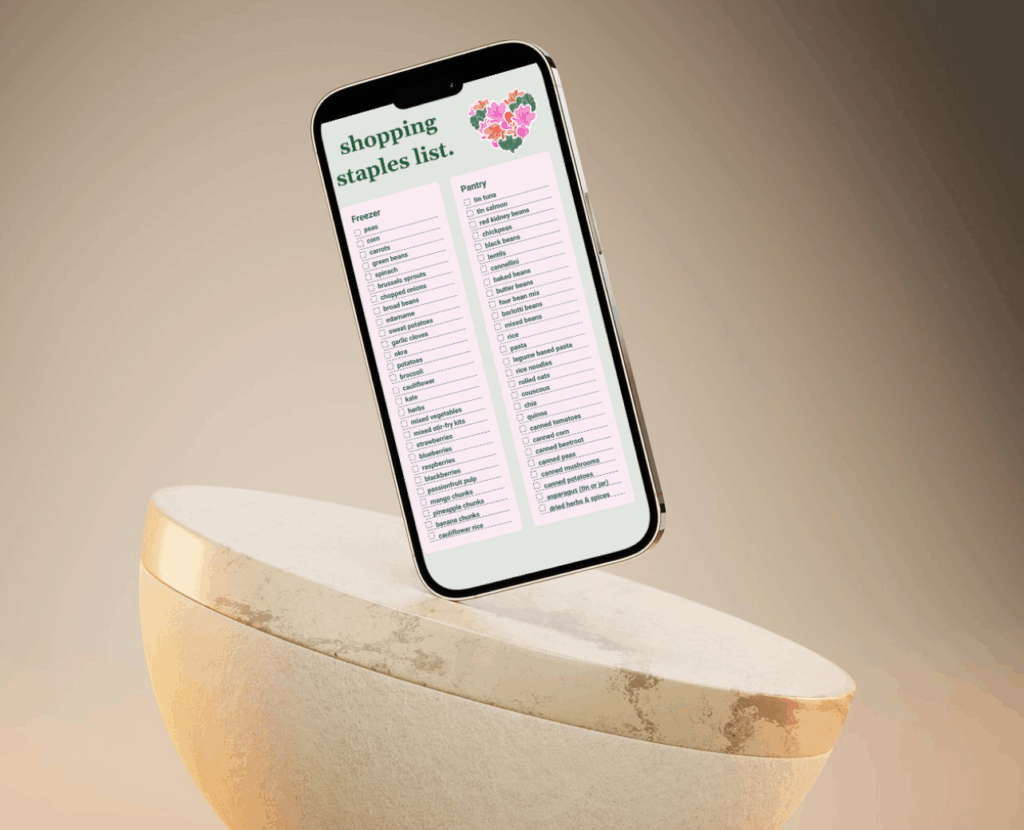This resource is part of our ‘Love what you eat‘ campaign for National Nutrition Week 2025.
This resource is part of our ‘Love what you eat‘ campaign for National Nutrition Week 2025.
From market to meal, every choice is a chance to love what you eat.
Let’s face it, food shopping can feel like a chore at the best of times. Whether you’re rushing in after work to grab something for dinner or popping in for last-minute essentials, it can often feel tedious. Particularly when you’re battling peak-hour crowds!
But what if we told you that you that your food shops don’t have to be stressful?
At its core, food shopping is the first step to nourishing your body. It’s where you fuel, support your health and bring joy to your plate. So why not put measures in place to romanticise the process and mindfully enjoy it? Here are some tips to treat food shopping as a form of self-care, mindfulness and connection to what you eat.
Before heading to the supermarket, take a few minutes to plan your meals and snacks for the week. Mapping out what you need not only makes shopping easier it also helps reduce impulse buys and food waste. Research shows that using a shopping list can lead to more nourishing food choices and even greater savings at the checkout. (1) With technology at our fingertips, you can either use the Notes section in your phone or write out your list. We’ve included a FREE print out for you to take on your next trip to the shops, so you don’t forget any ingredients.
Hot tip: Keep a running list on your phone that you can add to throughout the week, so nothing gets missed and shopping feels less daunting.
Use a weekly meal planner to visualise what you and your family would like to eat
Remember to mix it up with quick dinners, family favourites, and a few new recipes
Handy Tip: Don’t forget to add snacks to your list, so they are easy to grab and go
This might sound silly, but it’s amazing the difference shopping on a full stomach can do! Research shows that hunger can increase your likelihood of purchasing more food, even if they’re not on your list. (2) So, having a quick snack before heading out could save your wallet in the long run. Hungry for ideas? Our love your snacks guide has you covered.
Most of your staples and core fresh foods are found around the edges of the supermarket.
Fruit and vegetables: fresh, seasonal produce to form the base of your meals.
Dairy and alternatives: milk, yoghurt, and cheese.
Meat, poultry, and seafood: choose lean cuts, fresh or frozen, to suit your meals for the week.
Bread and bakery items: wholegrain breads, wraps, or rolls for sandwiches and quick meals.
Frozen foods: vegetables, fruit, fish etc. for quick, staple options.
Start your shop here and only head into the inner aisles for pantry staples or specific items on your list. Add items like pasta, rice, tinned tomatoes, or beans the extras that round out your meals.
A well-stocked pantry and freezer makes whipping up delicious and nutritious meals in no time a breeze. Download our shopping staples list for versatile pantry items and convenient freezer staples.
With the cost-of-living crisis being a significant consideration for shoppers, smart planning can make a big difference. Consider heading to a shopping centre that has more than one supermarket. For example, shopping at a value-based supermarket like Aldi for staples, and then heading to Coles, Woolworths or IGA for any additional items. You might even want to head to a local farmers market for your produce, which often sells seasonal items at lower prices and supports local growers.
In order to make the most out of your weekly shops whilst also making sure you’re getting ‘bang for your buck’, plan your meals around what produce is currently in season! Seasonal produce is often more affordable, fresh and filled with greater flavours. Some ways I love to do this is by:
This recipe is packed full of fresh vegetables, which can be substituted seasonally.
Cream of broccoli soup is a great shopping recipe because it’s budget-friendly, makes the most of simple ingredients like broccoli, onion, and stock, and can easily be scaled up to batch cook and freeze. It’s also a tasty way to use up broccoli that’s slightly past its prime, reducing food waste while giving you a nourishing, comforting meal.
Explore more useful resources.

